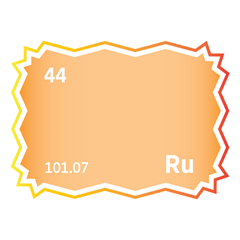The 2050 PGM Market Outlook Report
It's likelihood and consequences for PGMs
Implications for platinum, palladium and rhodium
SFA (Oxford)'s 2050 Market Outlook report is for companies seeking a distant view of the PGM markets and robust price forecasts considering the long-term market balance and macroeconomic factors. This in-depth, forward-looking report offers a long-term sensitivity analysis of fundamental demand, including the impact of powertrain electrification and expansion of the hydrogen economy in the race to 'net-zero', and an in-depth assessment of primary and secondary supply trends, including the changing nature and economics of global supply, mine reserve depletion, future projects, recycling potential and stocks.
2050 vision: Discover new long-term trends
'Net Zero' is a destination without a roadmap. But more than climate tunnel vision is needed to see that by 2050 every driver of PGM markets will be all over the map. Demographics provide the most reliable signposts. From here to there, population ageing – and consequent strains on public finances, labour supply, inflation and financial security – will shape PGM demand as much as climate goals.
SFA's ground-breaking analysis, provides an anchor for our view out to 2050 we take into account various macroeconomic factors, including global economic and climate forecasts from Oxford Economics and the European Commission’s strategic vision out to 2050 (including European Green Deal and Pathway to Net Zero), as well as others. We then provide the PGM outlook within a macro envelope of these economic scenarios, with SFA base case analysis as well as realistic outcome scenarios addressing a high- and low-road approach.
As politicians target environmental ambitions for the rest of this century, SFA (Oxford)’s clients are asking for ever more longer-term outlooks for PGMs. This has forced SFA beyond its established and definitive 10-year market outlook – the safe-ish harbour of PGM demand/supply modelling and forecasting – into uncharted waters, far distant horizons. Here big trends dominate small cycles, causation is less easily distinguished from correlation, and vision can easily blur into visuals. And the right questions are more valuable than glib answers.
Our extrapolations beyond 2030 to 2050 are not definitive but identify high-level, well-reasoned potential pathways. Our course follows the least uncertain pilot of economics, politics and commodity markets – demographics. And never loses sight of the fact that we must start from ‘here’ – weighty government debts. This combination of global ageing and government indebtedness likely means headwinds for many PGM end-uses, such as jewellery, autos and industrial applications. But ‘older’ at the ballot box also means ‘more traditional’, so today’s PGM uses may endure longer than many expect. And inflation whipped up by a worker shortage plus depleted government finances makes a perfect storm for investors seeking safe havens, including PGMs.
Horizons are very long term, but also wide. What if Net Zero 2050 were achieved and the electric vehicle fleet dominated car buying? What does it mean for PGMs, battery materials… and supply challenges. What if the ‘consensus’ macro course came true? What if we detour from the main course?
This report is a timely and unique guide for companies and investors to PGM markets and prices nearer a 'Net Zero' carbon world. It stresses that climate policy aspirations are just one (important) detail in the big picture. And that other social and economic tectonic plates are moving, and will frustrate those ambitions. Most importantly, ageing populations – impacting labour supply, public debt, savings, inflation, financial stability, and the appetite for ‘lifestyle change’ and risk – will mould the demand for PGM jewellery, auto use and investment more predictably than 'Net Zero' good intentions. It’s only against this backdrop that the PGM demand implications of electric vehicles and an expanding hydrogen economy, and their primary and recycling supply-side consequences, can be reliably teased out.
Drawing on top-level research by international institutions – the OECD, European Commission, IMF – and by local Oxford experts – LMC Automotive, Oxford Economics – the report details the High and Low Roads to 2050. SFA’s unrivalled vision provides 'The Right Road to 2050' for the platinum group metals. SFA produces a highly-detailed report covering the long-term outlook for platinum, palladium and rhodium, as well as ruthenium and iridium where relevant. SFA provides a base case analysis plus realistic scenarios of PGM market development including growth in new end-use demand vs. security of supply. Included in the contents is:
Demand and price forecasting
-
Granular analysis of global demand trends on a regional basis, covering the burgeoning hydrogen economy and major PGM end-use sectors (autocatalysts, jewellery, glass, petroleum, electronics, chemical, and medical/dental), as well as investment demand, including exchange-traded funds and bars/coins.
-
Identification of new end-use opportunities for PGMs, as well as existing applications which are at risk, particularly from price-induced substitution and/or thrifting and emerging technologies.
-
Analysis of autocatalyst demand for both light- and heavy-duty vehicles, considering global emissions standards and the trends affecting gasoline and diesel ICE, specifically the influence of powertrain electrification, including hybrid, battery-electric and hydrogen fuel cell vehicles.
-
Critical evaluation of the hydrogen economy, including fuel cells, electrolysers, the economics of hydrogen production, and supply chains, in addition to the drivers of adoption and applications in transport and industry. The availability of supply to meet future requirements in this sector will also be explored (N.B. We will extend this part of the report to cover other PGMs critical to hydrogen economy i.e., ruthenium and iridium).
-
A full appraisal of the jewellery market, including consumer purchasing trends, shifting retail dynamics, market share, recycling, regional macroeconomic influences and demographic drivers, in addition to price elasticity and platinum, palladium and white gold substitution.
-
Detailed regional insights into the industrial market, including chemical, electrical, glass and medical applications, to reveal long-term demand trends associated with new capacity and top-up requirements, as well as price-induced thrifting and substitution risks.
Primary supply
-
A comprehensive breakdown and evaluation of historical, current, and future mine supply trends for PGMs, referencing recent expansions and their deliverability, as well as new projects, including those which have been shelved or postponed. This also considers the impact of mine depletion and closures.
-
Analysis of the changing nature and economics of global supply, including incentive prices and mine closure prices, and taking into account the cost and profit dynamics of production on a regional basis (including local currency). Production, cost, and margin profiles provide a long-term picture of producers’ profitability.
included in our analysis.
Secondary supply
-
An assessment of the future potential volumes of recycling, including autocatalysts, electronics and jewellery. The analysis covers collection rates, types and age of scrap supply, timing, and the business case to recycle, as well as incentive prices and impacts from price volatility.
Above ground stock
-
Estimate of current stock including closed-loop recycling, and reconciliation given expected market developments and their possible effect on price movement.
Price forecast
-
Robust, economically derived platinum, palladium, and rhodium price forecasts out to 2031 based on fundamental global and regional supply-demand market developments and relevant macroeconomic factors, with well-reasoned extrapolations beyond 2031 to 2050. There is further information of the influence of both project incentive prices and mine closure inducement prices on the long-term price forecast, including an associated incentive price by project.
Scenarios
-
SFA technical scenarios will include a base case with a view from today and realistic scenarios based on reasonable assumption that bring the market into balance. These scenarios reflect policy adoption, the growing importance of ESG, as well as developments in fundamental supply, demand, and recycling.
-
In addition, detailed climate macroeconomic scenario analysis derived from Oxford Economics will evaluate how the world’s economic landscape could evolve under various climate scenario narratives, including ‘no further action’ ‘net zero’ and ‘delayed transition’, in addition to baseline.
-
Supply CAPEX assumptions for mining deeper will be considered i.e., costs of getting ore above ground not just the reserves available. An 'Equaliser' perspective will therefore be applied i.e., what reasonable probable and possible projects will make the market balance.
Our detailed analysis and valuable industry insight is backed up by eleven analysts working discreetly with the industry in all areas of the value chain, whether at South African mines, valuing projects and plants around the world, working with fabricators to assess the impact of new end-uses, visiting China and Japan to investigate their jewellery markets or with corporate Boards conducting price risk analysis for multi-million dollar business decisions

Who should read this 2050 PGM report?
-
Juniors and mining companies with advanced projects, mines in development or operations ramping up to full production.
-
Investors and financiers requiring a long-term understanding of the risks to platinum-group metals from the rise of electric cars, which is key to investments in PGM mines and projects that are commissioned in the 2020s.
-
Fabricators and industrial end-users requiring strategic direction on the long-term influences on the platinum-group metals markets.
-
Governments and manufacturers concerned about the availability of platinum-group metals for fuel-cell-powered cars and equipment.
-
New business entrants.
Live Q&A with the analysts

-
Each 2050 PGM report is supported by a video call, most often hosted through MS Teams, which is led by Beresford Clarke, along with our team of expert PGM analysts where our team highlight the key market aspects and address any further questions you may have.
Contact one of our team for more details

Beresford Clarke
Managing Director: Technical & Research

Dr Jenny Watts
Critical Minerals Technologies Expert

Dr Ralph Grimble
Operations Director

Alex Biddle
Senior Mining Analyst

Oksan Atilan
Consulting Automotive Analyst
Other PGM market reports
Explore other reports our clients use regularly.
Attend our next PGM event



How can we help you?
SFA (Oxford) provides bespoke, independent intelligence on the strategic metal markets, specifically tailored to your needs. To find out more about what we can offer you, please contact us.
























